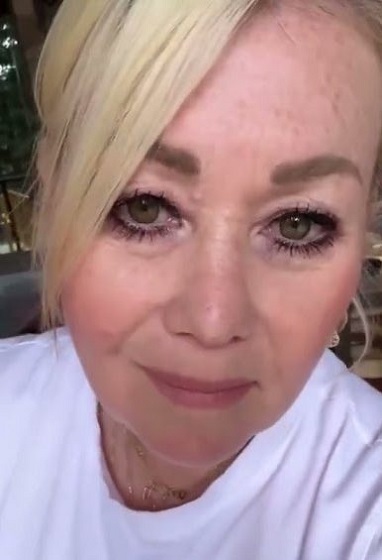Health
Hundreds of Studies Show DMSO Transforms The Treatment of Cancer

The Forgotten Side of Medicine by A Midwestern Doctor
It might not be something your doctor wants to talk about, but it certainly is something we should all know more about. The video from an old 60 Minutes episode is a must see.
Dimethyl Sulfoxide (DMSO)
Exactly six months ago, I used this newsletter to bring the public’s attention to DMSO, a simple naturally occurring compound that has a number of immense therapeutic benefits and virtually no toxicity (detailed here). In turn, when it was discovered in the 1960s, it quickly became America’s most desired drug (as it cured many incurable ailments). A lot of the scientific community promptly got behind it and before long, thousands of papers had been published on every conceivable medical application for it. Consider for example this 1980 program 60 Minutes aired on DMSO:
As such, throughout this series, I’ve presented the wealth of evidence that DMSO effectively treats:
Strokes, paralysis, a wide range of neurological disorders (e.g., Down Syndrome and dementia), and many circulatory disorders (e.g., Raynaud’s, varicose veins, hemorrhoids), which I discussed here.
A wide range of tissue injuries, such as sprains, concussions, burns, surgical incisions, and spinal cord injuries (discussed here).
Chronic pain (e.g., from a bad disc, bursitis, arthritis, or complex regional pain syndrome), which I discussed here.
A wide range of autoimmune, protein, and contractile disorders such as scleroderma, amyloidosis, and interstitial cystitis (discussed here).
A variety of head conditions, such as tinnitus, vision loss, dental problems, and sinusitis (discussed here).
A wide range of internal organ diseases such as pancreatitis, infertility, liver cirrhosis, and endometriosis (discussed here).
A wide range of skin conditions such as burns, varicose veins, acne, hair loss, ulcers, skin cancer, and many autoimmune dermatologic diseases (discussed here).
Many challenging infectious conditions, including chronic bacterial infections, herpes, and shingles (discussed here).
In turn, when I published this series (because of both how effective and easily accessible DMSO is) it caught on like wildfire, this publication went from being the ninth to top ranked newsletter in the genre, there was a nationwide DMSO shortage, and I’ve received almost two thousand testimonials from people who benefitted from DMSO (and often had remarkable results—particularly for chronic pain).
That response was quite surprising and in my eyes, a testament not only to how well DMSO works, but more importantly, how effectively DMSO’s story was erased from history (e.g., many long-time enthusiasts of natural health shared that they were blown away they’d never heard of it). This sadly illustrates how effectively the medical industry can bury anything threatening its bottom line (e.g., the FDA—for rather petty reasons—used everything at their disposal to make sure DMSO was forgotten).
In turn, within the DMSO story, I believe one of the least appreciated (or even known) facets of it are the remarkable contributions DMSO makes to the treatment of cancer—which is even more remarkable given that far more research has been done with DMSO and cancer than all the other topics I just listed. Consequently, for months I’ve wanted to publish an article on this (particularly since one incredible natural cancer therapy utilizes DMSO), but simultaneously, it just wasn’t feasible to as there was so much literature to go through.
That’s been weighing on me considerably (e.g. many readers have asked me to prioritize this article over everything else), so over the last three months (and particularly the last three weeks), I shifted my responsibilities to focus on the topic thoroughly. While it took a bit of a toll on me, the article is now done. As such, I greatly hope some of what’s in here can benefit you and I likewise thank each of you who has supported this newsletter and made it possible for me to spend so much time delving into these critical forgotten sides of medicine.
The Forgotten Side of Medicine is a reader-supported publication. To receive new posts and support my work, please consider becoming a free or paid subscriber. To see how others have benefitted from this newsletter, click here!
Story at a Glance:
- Dimethyl sulfoxide (DMSO) effectively treats a broad spectrum of conditions, including strokes, pain, tissue injuries, autoimmune inflammation, and cancer.
- DMSO inhibits cancer growth and consistently reverts cancer cells to their normal state.
- DMSO enhances cancer visibility to immune cells, enabling the body to eliminate tumors previously undetected by the immune system.
- DMSO effectively mitigates major challenges in conventional cancer care, such as radiation damage, chemotherapy toxicity, and pain from “incurable” metastatic cancer.
- DMSO markedly boosts the efficacy of many chemotherapy drugs, allowing safer, lower doses to achieve the same results.
- When paired with certain natural therapies, DMSO often produces highly effective cancer treatments, revolutionizing cancer care.
Cancer is one of the most challenging conditions to deal with in medicine, as two seemingly identical cancers can have very different causes. As a result, any standardized (holistic or conventional) protocol will inevitably fail some of the patients it is meant to treat.
Furthermore, since there is so much fear surrounding cancer (e.g., from what the primal fear brings up inside you, from how your social circle reacts to it and from how the medical system uses all of that to push cancer therapies) it is often very difficult to have a clear head about the ordeal or find the right source of advice.
Likewise, since so much money is involved (e.g. 65% of oncologist’s revenues comes from chemotherapy drugs and cancer drugs are by far the most profitable drug market), there is significant pushback (e.g. from medical boards or unhappy relatives) against anyone who attempts alternative cancer therapies making it very difficult to practice unconventional cancer care—particularly since no alternative treatment works all the time.
Note: in a recent article, I highlighted how urologists initially would not touch Lupron (which is now also used as a the puberty blocker) because of how unsafe and ineffective it was, but once they started being paid a lot of money to prescribe it for prostate cancer, it rapidly became their number one drug.
In contrast, while the conventional cancer therapies often have serious issues that make them far worse than any benefit they offer, some conventional cancer therapies are frequently the only available option which can save someone’s life (which has led to me at different times having fights with close friends or relatives either not to do chemotherapy or to get them to start it in cases where I felt it was absolutely necessary).
Given all of this, I presently believe that no “ideal” cancer treatment exists, but if it can be done (e.g., it’s effective for the cancer and feasible to implement), the most ideal to least ideal treatments are as follows:
•Identifying the root cause of a cancer, removing it, and having it quickly and permanently go away on its own (which is sometimes possible).
•Have enough time to rebalance the body so that its terrain no longer supports the cancer and the cancer can fade away on its own (which is often doable but a fairly involved process many have difficulty carrying out).
•Significantly enhance the function of the immune system so that it will eliminate the cancer.
•Find a treatment that is toxic to the cancer but relatively benign to the rest of the body.
•Find a treatment with an acceptable toxicity level and find ways to mitigate its effects.
•Accept a moderately toxic treatment with significant side effects.
•Focus on living with the cancer rather than curing it and then finding ways to mitigate the symptoms you experience both from it and any existing treatment protocols.
•Use a costly conventional therapy that is unlikely to work and live with all the side effects until your life ends (which in more extreme treatment regimens can be quite severe).
If we take a step back, what’s truly remarkable about DMSO, depending on how it is used, is that it can effectively provide most of the benefits listed above with the least amount of collateral damage (e.g., side-effects, toxicity, etc.).
Break The Needle
B.C. doubles down on involuntary care despite underinvestment

By Alexandra Keeler
B.C.’s push to replace coercive care with community models never took hold — and experts say province isn’t fixing that problem
Two decades ago, B.C. closed one of the last large mental institutions in the province. The institution, known as Riverview Hospital in Coquitlam, had at its peak housed nearly 5,000 patients across a sprawling campus.
There, patients with mental illnesses were subjected to a range of inhumane treatments, city records show. These included coma therapy, induced seizures, lobotomies and electroshock therapy.
When the province transferred patients out of institutions like Riverview during the 1990s and early 2000s, it promised them access to community-based mental health care instead. But that system never materialized.
“There was not a sustained commitment to seeing [the deinstitutionalization process] through,” said Julian Somers, a professor at Simon Fraser University who specializes in mental health, addiction and homelessness.
“[B.C.] did not put forward a clear vision of what we were trying to achieve and how we were going to get there. So we languished.”
Today, amid a sharp rise in involuntary hospitalizations, experts say B.C. risks repeating the mistakes of the past. The province is using coercive forms of care to treat individuals with mental health and substance use disorders, while failing to build community supports.
“We’re essentially doing the same thing we did with institutions,” said Somers, who began his clinical career at Riverview Hospital in the 1980s.
“[We’re] creating a system that doesn’t actually help people and may make things worse.”
Riverview’s legacy
B.C.’s push for deinstitutionalization was driven by growing evidence that large psychiatric institutions were harmful, and that community-based care was more humane and cost effective.
Nationally, advances in antipsychotic medication, rising civil rights concerns and growing financial pressures were also spurring a shift away from institutional care.
A 2006 Senate report showed community care could match institutional care in both effectiveness and cost — provided it was properly funded.
“There was sufficient evidence demonstrating that people with severe mental illness had better outcomes in community settings,” said Somers.
Somers says people who stay long term in institutions can develop “institutionalization syndrome,” characterized by increased dependency, worse mental health outcomes and greater social decline.
At the time, B.C. was restructuring its health system, promising to replace institutions like Riverview with a regional network of mental health services.
The problem was, that network never fully materialized.
Marina Morrow, a professor at York University’s School of Health Policy and Management who tracked B.C.’s deinstitutionalization process, says the province placed patients in alternative care. But these providers were not always well-equipped to manage psychiatric patients.
“Nobody left Riverview directly to the street,” Morrow said. “But some … might have ended up being homeless over time.”
A 2012 study led by Morrow found that older psychiatric Riverview patients who were relocated to remote regional facilities strained overburdened and ill-equipped staff, leading to poor patient outcomes.
Somers says B.C. abandoned its vision of a robust, community-based system.
“We allowed BC Housing to have responsibility for mental health and addiction housing,” he said. “And no one explained to BC Housing how they ought to best fulfill that responsibility.”
Somers says the province’s reliance on group housing was part of the problem. Group housing isolates residents from broader society, instead of integrating them into a community. A 2013 study by Somers shows people tend to have better outcomes if they get to live in “scattered-site housing,” where tenants live in diverse neighbourhoods while still receiving personalized support.
“All of us … are influenced substantially by where we live, what we do, and who we do things with,” he said.
Somers says a greater investment in community care would have emphasized better housing, nutrition, education, work and social connection. “Those are all way more important than medical care in terms of the health of the population,” he said.
“We closed institutions having no [alternative] functioning model.”
Reinstitutionalization
Despite B.C.’s efforts to deinstitutionalize, the practice of institutionalizing certain patients never truly went away.
“We institutionalize way more people now than we ever did, even at peak Riverview population,” said Laura Johnston, legal director at Health Justice, a B.C. non-profit focused on coercive health laws.
Between 2008 and 2018, involuntary hospitalizations rose nearly 66 per cent, while voluntary admissions remained flat.
In the 2023-24 fiscal year, more than 25,000 individuals were involuntarily hospitalized at acute care facilities, down only slightly from 26,600 the previous year, according to B.C.’s health ministry. These admissions involved about 18,000 unique patients, indicating many individuals were detained more than once.
Subscribe for free to get Break The Needle’s latest news and analysis – or donate to our investigative journalism fund.
In September 2024, a string of high-profile attacks in Vancouver by individuals with histories of mental illness reignited public calls to reopen Riverview Hospital.
That month, B.C. Premier David Eby pledged to further expand involuntary care. Currently, B.C. has 75 designated facilities that can hold individuals admitted under the Mental Health Act. The act permits individuals to be involuntarily detained if they have a mental disorder requiring treatment and are significantly impaired. These existing facilities host about 2,000 beds for involuntary patients.
Eby’s pledge was to add another 400 hospital-based mental health beds, and two new secure care facilities within correctional facilities.
Johnston, of Health Justice, says Eby’s announcement merely continues the same flawed approach. It “[ties] access to services with detention and an involuntary care approach, rather than investing in the voluntary, community-based services that we’re so sorely lacking in B.C.”
Kathryn Embacher, provincial executive director of adult mental health and substance use with BC Mental Health & Substance Use Services, says additional resources are needed to support those with complex needs.
“We continue to work with the provincial government to increase the services we are providing,” Embacher said. “Having enough resources to serve the most seriously ill clients is important to provide access to all clients.”
 |
θəqiʔ ɫəwʔənəq leləm’ (the Red Fish Healing Centre for Mental Health and Addiction) is for clients with complex and concurrent mental health and substance use disorders. | BC Mental Health and Substance Use Services website
Inertia
If B.C. wants to avoid repeating the mistakes of its past, it needs to change its approach, sources say.
One concern Johnston has is with Section 32 of the Mental Health Act. Largely unchanged since 1964, it grants broad powers to medical professionals to detain and control patients.
“It grants unchecked authority,” she said.
Data obtained by Health Justice show one in four involuntarily detained patients in B.C. is subjected to seclusion or restraint. And even this figure may understate the problem. B.C. only began reliably tracking its seclusion and restraint practices in 2020, and only collects data on the first three days of detention.
A B.C. health ministry spokesperson told Canadian Affairs that involuntary care is sometimes necessary when individuals in crisis pose a risk to themselves or others.
“It’s in these situations where a patient, who meets very specific criteria, may need to be held involuntarily under the Mental Health Act,” the spokesperson said.
But York University professor Morrow says those “specific criteria” are applied far too broadly. “We have this huge hammer [involuntary care] that sees everything as a nail,” she said. “Involuntary treatment was meant for rare, extreme cases. But that’s not how it’s being used today.”
Morrow advocates for reviving interdisciplinary care that brings psychiatry, psychology and primary care together in community-based settings. She pointed to several promising models, including Toronto’s Gerstein Crisis Centre, which provides community-based crisis services for those with mental health and substance use issues.
Somers sees Alberta’s recovery-oriented model as a potential blueprint. This model prioritizes live-in recovery communities that combine therapeutic support with job training and stable housing, and which permit residents to stay up to one year. Alberta has committed to building 11 such communities across the province.
“They provide people with respite,” Somers said.
“They provide them with the opportunity to practice and gain confidence, waking up each day, going through each day without drugs, seeing other people do it, gaining confidence that they themselves can do it.”
Johnston advocates for safeguards on involuntary treatment.
“There’s nothing in our laws that compels the health system to ensure that they’re offering community-based or voluntary based services wherever possible, and that they are not using involuntary care approaches without exhausting other options,” she said.
“There’s inertia in a system that’s operated this way for so long.”
This article was produced through the Breaking Needles Fellowship Program, which provided a grant to Canadian Affairs, a digital media outlet, to fund journalism exploring addiction and crime in Canada. Articles produced through the Fellowship are co-published by Break The Needle and Canadian Affairs.
Subscribe to Break The Needle.
Our content is always free – but if you want to help us commission more high-quality journalism,
consider getting a voluntary paid subscription.
Addictions
Man jailed for trafficking diverted safer supply drugs, sparking fresh debate over B.C. drug policies

Nanaimo drug trafficker’s case is further evidence of safer supply diversion. But some sources say even diverted drugs reduce harm
In early May, 68-year-old Ronald Schilling of Nanaimo, B.C., was sentenced to three years in prison for trafficking street drugs such as fentanyl and meth — as well as government-supplied opioids.
When authorities had arrested Schilling two years earlier, they had found him in possession of more than 80 government-supplied opioid pill bottles labeled with other patients’ names.
Those pills had been dispensed to patients under B.C.’s “prescribed alternatives” program, more commonly known as safer supply. The program aims to reduce overdose deaths by dispensing pharmaceutical opioids to drug users as an alternative to toxic street drugs.
In Schilling, patients of this program had found a drug dealer who was willing to give them harder drugs — such as fentanyl — in exchange for their prescription opioids. Schilling would in turn sell their prescription opioids to others.
“Mr. Schilling preyed upon people who were taking the safe supply drug,” Provincial Court Judge Karen Whonnock said during the sentencing hearing.
Schilling’s case is further evidence that safer supply opioids are making their way to the streets — and having unintended negative consequences. However, some sources say even diverted pills reduce harm if they flood the market with safer drugs.
‘Upside Down’
Schilling, a former charity worker, developed a cocaine addiction after the sudden death of his partner. He ultimately turned to drug trafficking to fund his addiction, according to his lawyer.
In court, the prosecution described Schilling as operating a mid-level drug trafficking scheme that exploited B.C.’s safer supply program.
Schilling coordinated with multiple dealers to source both illicit and prescription drugs, and had at least three individuals working under him. His text messages showed he would arrange to meet clients near Nanaimo’s Outreach Pharmacy to trade potent street drugs for the prescribed medications they had just received.
He operated under the name “Upside Down Inc.” — “down” being a street reference to fentanyl — and had business cards to match. To reassure users that the street drugs were safe, he would have them tested at a local overdose prevention site.
‘Predatory behaviour’
While Schilling’s case is unusual, it adds to the growing body of evidence that provincial safer supply programs are not always being used as intended.
In one example, a B.C. government report released in February revealed that more than 60 pharmacies were involved in a kick-back scheme, offering patients cash or rewards to fill safer supply prescriptions they did not need. Some of those drugs were then sold on the black market.
Collen Middleton, a co-founder of the Nanaimo Area Public Safety Association, refers to safer supply drugs as the “perfect consumer product.”
“They are a product that produces its own demand, because it’s addictive,” said Middleton, whose neighbourhood association is a vocal critic of safer supply.
One of Middleton’s concerns is that safer supply drugs are presented as safe, despite being addictive themselves. He says this makes them an effective gateway to more dangerous street drugs like fentanyl.
“Those drugs are being marketed as safe to kids … [so] you’re bringing more people into using addictive drugs, more abuse, more predatory behaviour toward a vulnerable segment of the population,” he said.
The B.C. Ministry of Health told Canadian Affairs in an emailed statement that it takes the “diversion of prescription medications … very seriously.”
“The unauthorized distribution is illegal and puts the public at risk,” it said.
In response to the B.C. pharmacy scandal, the province tightened its protocols for dispensing prescription opioids. All new and most existing patients must take prescription opioids under the supervision of health-care professionals, a protocol known as witnessed dosing. In rare cases, existing clients may continue to take their doses offsite if the prescriber views the risk of diversion as low.
Mixed evidence
In its statement to Canadian Affairs, B.C.’s health ministry also said its safer supply program “plays an important role in reducing substance use-related harms” and can lower overdose risk by as much as 91 per cent.
This figure comes from a 2024 B.C. study published in the British Medical Journal. That study found individuals prescribed pharmaceutical opioids early in the pandemic were 91 per cent less likely to die from any cause in the week after receiving at least four days of safer supply opioids, compared to a control group.
The study only tracked outcomes during the week following prescription fills. It did not verify whether individuals took the opioids as prescribed.
A study published in April in The Lancet Public Health shows B.C.’s safer supply programs are linked to improved short-term health outcomes, including fewer overdoses and hospital visits.
However, a population-level study in JAMA Health Forum found no significant reduction in overdoses or mortality associated with B.C.’s safer supply and decriminalization policies. It also suggested possible increases in emergency department visits and hospitalizations.
Comprehensive long-term research on the health impacts of Canadian safer supply programs is limited.
Creating a market
Some sources say the diversion of prescription opioids may be less harmful than the alternatives.
“If you could replace [street] drugs with safer pharmaceutical alternatives, people’s needs would be met,” said Perry Kendall, B.C.’s former provincial health officer and a long-time harm reduction advocate.
“They wouldn’t have to turn to the illicit market, and their risk of a toxic drug overdose would be significantly reduced.”
In Kendall’s view, Schilling was in some ways functioning as a harm-reduction worker.
“[Schilling] was kind of offering a harm reduction service, as well as supplying people with the drugs they wanted,” Kendall said.
Kendall’s views are echoed in a 2023 B.C. government review that notes diversion of safer supply drugs to people already at risk of drug poisoning may be beneficial. But the review also acknowledges that diversion to users who would not otherwise use unregulated drugs is harmful.
Still, Kendall acknowledged a fundamental issue: “[Safer supply opioids don’t] really give you the same high [as fentanyl]. So if you can trade [them] to … get what you’re looking for, which is fentanyl, then that’s what you will do.”
Leonard Krog, the mayor of Nanaimo, says it is clear that, within Nanaimo, B.C.’s policies to help drug users are making it easier for dealers to sell their toxic drugs.
“We have a safe injection site next to City Hall, and there’s no question dealers are coming down here and they’re selling their stuff, because the market’s right here,” said Krog.
But Kendall warns that pulling back on decriminalization and safer supply programs creates a dangerous gap.
“The daftest thing you can do is create a market of desperate people and then fail to fill it,” said Kendall. “Somebody’s going to meet those needs — and they’re not going to be law-abiding citizens.”
Krog is unconvinced.
“If we make it easier for the wolves to successfully exploit the sheep, is that a good thing?”
This article was produced through the Breaking Needles Fellowship Program, which provided a grant to Canadian Affairs, a digital media outlet, to fund journalism exploring addiction and crime in Canada. Articles produced through the Fellowship are co-published by Break The Needle and Canadian Affairs.
Subscribe to Break The Needle
-

 Addictions8 hours ago
Addictions8 hours agoMan jailed for trafficking diverted safer supply drugs, sparking fresh debate over B.C. drug policies
-

 Alberta10 hours ago
Alberta10 hours agoHow Trump and Alberta might just save Canada
-

 Business9 hours ago
Business9 hours agoThe Liberals Finally Show Up to Work in 2025
-

 Alberta8 hours ago
Alberta8 hours agoJann Arden’s Rant Will Only Fuel Alberta’s Separation Fire
-

 Banks6 hours ago
Banks6 hours agoCanada Pension Plan becomes latest institution to drop carbon ‘net zero’ target
-

 Bruce Dowbiggin5 hours ago
Bruce Dowbiggin5 hours agoCaitlin Clark Has Been The Real Deal. So Her WNBA Rivals Hate Her
-

 Daily Caller7 hours ago
Daily Caller7 hours agoThere’s A Catch To California’s Rosy Population Stats
-

 espionage1 day ago
espionage1 day agoTrudeau Government Unlawfully Halted CSIS Foreign Operation, Endangering Officers and Damaging Canada’s Standing With Allies, Review Finds






